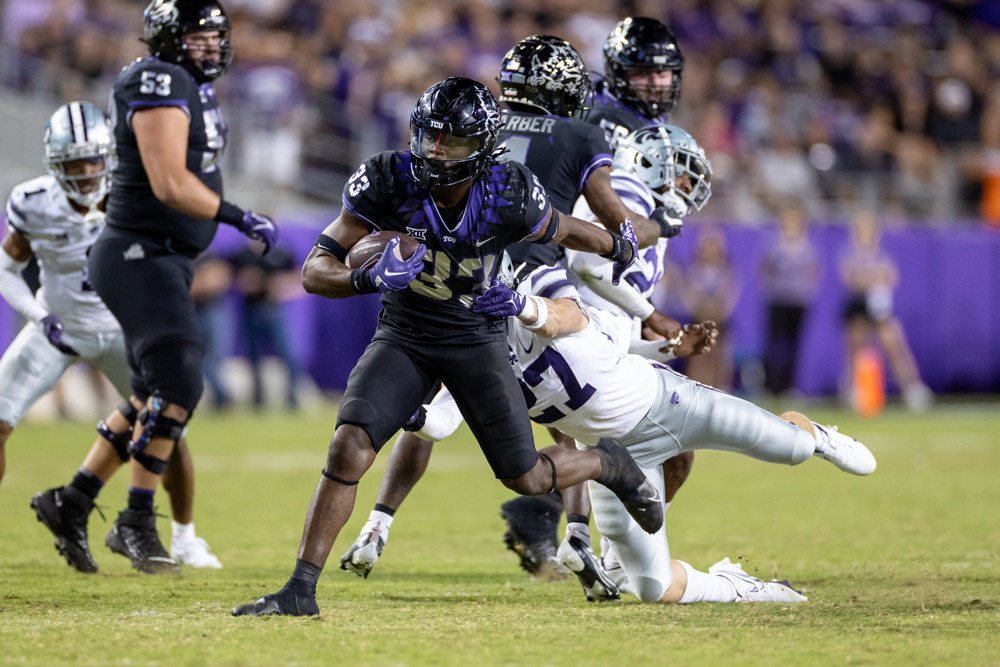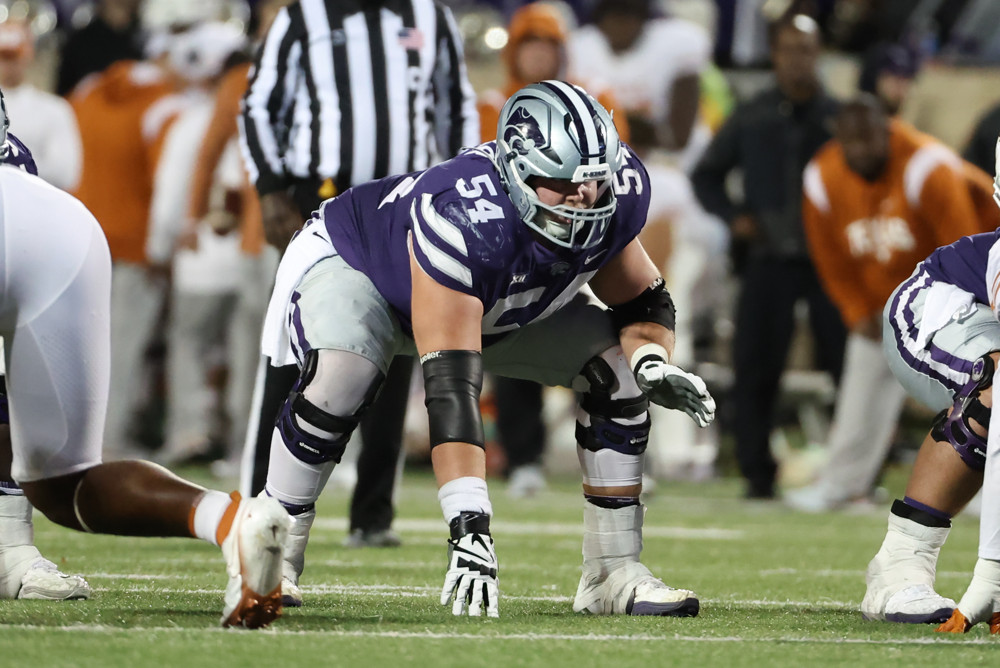Sitting behind Alabama in the CFP rankings despite its better record, TCU has inspired the masses to rage against this supposed injustice. But lost in this collective outcry is how TCU even got into this position in the first place.
Coming off four consecutive unranked seasons, the Horned Frogs hired Sonny Dykes to resurrect the program. Dykes, most recently employed just a few miles away at SMU, had come off three consecutive bowl appearances paired with top-15 scoring offenses in the FBS. Only eight games into his tenure in Fort Worth, he has already exceeded expectations with an 8-0 record and the third-ranked scoring offense, at 44.3 points per game.
Cracking the top 25 in each of the past three seasons at SMU in Passing Points Earned Per Play (PE per play), TCU’s No. 13 ranking comes as no surprise. But Dykes’ inaugural TCU offense runs the ball better than any of his SMU teams did, ranking 3rd in PE per play through 9 weeks.
But given the circumstances of the 2022 team, the success of the Horned Frogs rushing attack makes sense.
Individually, the Horned Frogs have talent to run the ball. Running back Kendre Miller ranks 5th in Broken and Missed Tackles per carry (0.3) and T-10th in yards after contact per carry (3.5) among FBS running backs with over 100 carries. Backup Emari Demercado averages 6 yards per carry and only slightly fewer yards after contact than Miller (3.4).
Quarterback Max Duggan can tote the rock too. Duggan averages 7.6 yards per carry and 0.3 PE per play on QB Designed runs and draws, both top-20 values among quarterbacks with 10 or more carries. Though not deliberate runs, his .63 PE per scramble ranks in the top-108, further illustrating his mobility. Playing alongside an offense consisting entirely of upperclassmen, Duggan and company also have plenty of experience, both good and bad, against Big XII defenses.
Playing in the premier passing conference in the country, Big XII defenses have adjusted their schemes to match how their opponents move the ball. Nearly all these defenses play most snaps with at least five defensive backs, such as Baylor’s 4-2-5 and Iowa State’s 3-3-5. The conference’s defenses on average have only 6.1 players in the box and play 21.7% of their downs with five or fewer in the box, both the lowest figures among FBS conferences.
But Dykes and offensive coordinator Garrett Riley, brother of Lincoln, exploit these nickel defenses even further. With their ability to craft formations and their capable passing attack, Dykes and Riley force defenses to play with 5 or fewer box defenders 28.4% of their snaps, well above the Big XII average.
But TCU’s formations do not just take defenders out of the box, but also put poor run defenders back in it. With such looks the Horned Frogs can block corners and safeties with tight ends and running backs, creating mismatches in favor of the running game.
Of the various formations Dykes and Riley use, a few stand out as particularly suited to breaking nickel defenses. Stacking 2 receivers on each side of the ball puts the linebackers and safeties in a conundrum. The linebackers fear straying too far from the box, unable to stop the inside run. The safeties fear aligning too wide, exposing the middle of the field, or too shallow, allowing the deep ball. In the Big XII, and frankly most of college football today, the defense chooses to stop the pass.
Having to stop the pass, the defense must stretch a thin box even thinner, opening up the run between the tackles. TCU has achieved great results from this look, averaging 14.7 yds and .6 EPA per carry out of the stack, including this play where TCU blocks four with five en route to a 70-yard touchdown run.
Split backs out of 20 personnel has given TCU 9.5 yards per rush this season. Nickel defenses struggle aligning to it, as the defensive back alignment can leave the defensive end and linebacker isolated. In one such case, TCU blocks zone with the second back leading through the backside of the line, and Kendre Miller cuts through the hole for 6.
To get the corner and safety involved in the run game, the Horned Frogs will align with two tight ends to one side and two receivers to the other. Limited by the structure of their scheme, most defenses must align to this with either the corner, the safety, or both in the box to fill the gaps and cover the tight ends. With the size and ability mismatch, TCU gains 8.5 yards per play out of this set. In this play complete with jet motion, the secondary stands no chance at defeating the blocks and adjusting to the chaos thrown their way, as Kendre Miller dashes for a 63-yard touchdown.
Beyond the numbers, TCU’s rushing attack opens up the passing attack, and vice versa. When TCU pulled 2 out of 21 personnel for a gain of 7, West Virginia immediately packed the box. Anticipating this response, the Horned Frogs put their leading receiver Quentin Johnston in the slot to get open against the safety. When the safety gazes too long at the play action, Johnston races past him on his way to a 55-yard touchdown catch and run.
Against Kansas State, TCU appeared to run to the short side, only for Duggan to pull the ball and throw to Geor’Quarius Spivey for a gain of 16. Showing this same action in the fourth quarter, Kansas State’s linebackers and secondary flow less quickly towards the run, fearful of the prior pass. Duggan then hands to Miller, who trots into the end zone to stretch a lead the Horned Frogs would never relinquish.
By putting talented players in positions to succeed, Sonny Dykes has quickly revitalized the TCU program. Given its continued success on the ground, TCU should not only win the Big XII, but challenge for a spot in the College Football Playoff.

